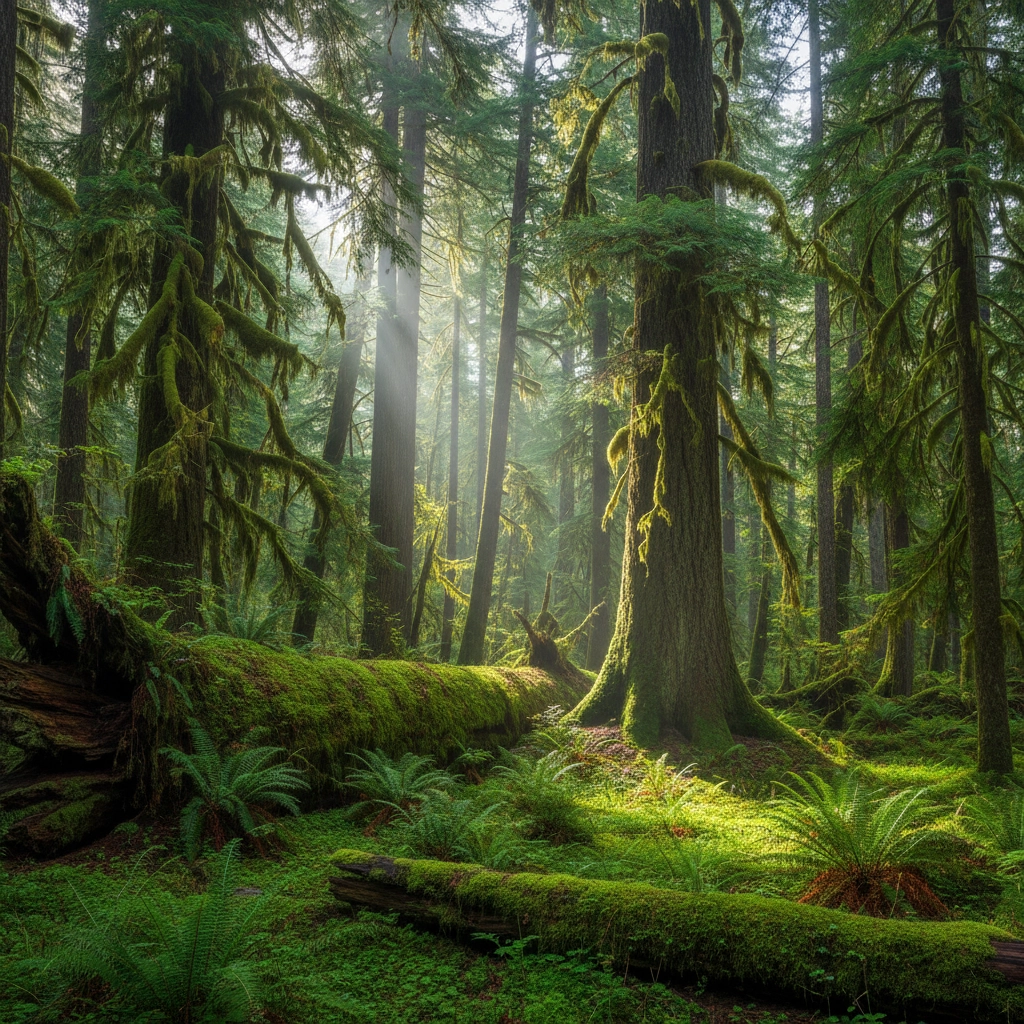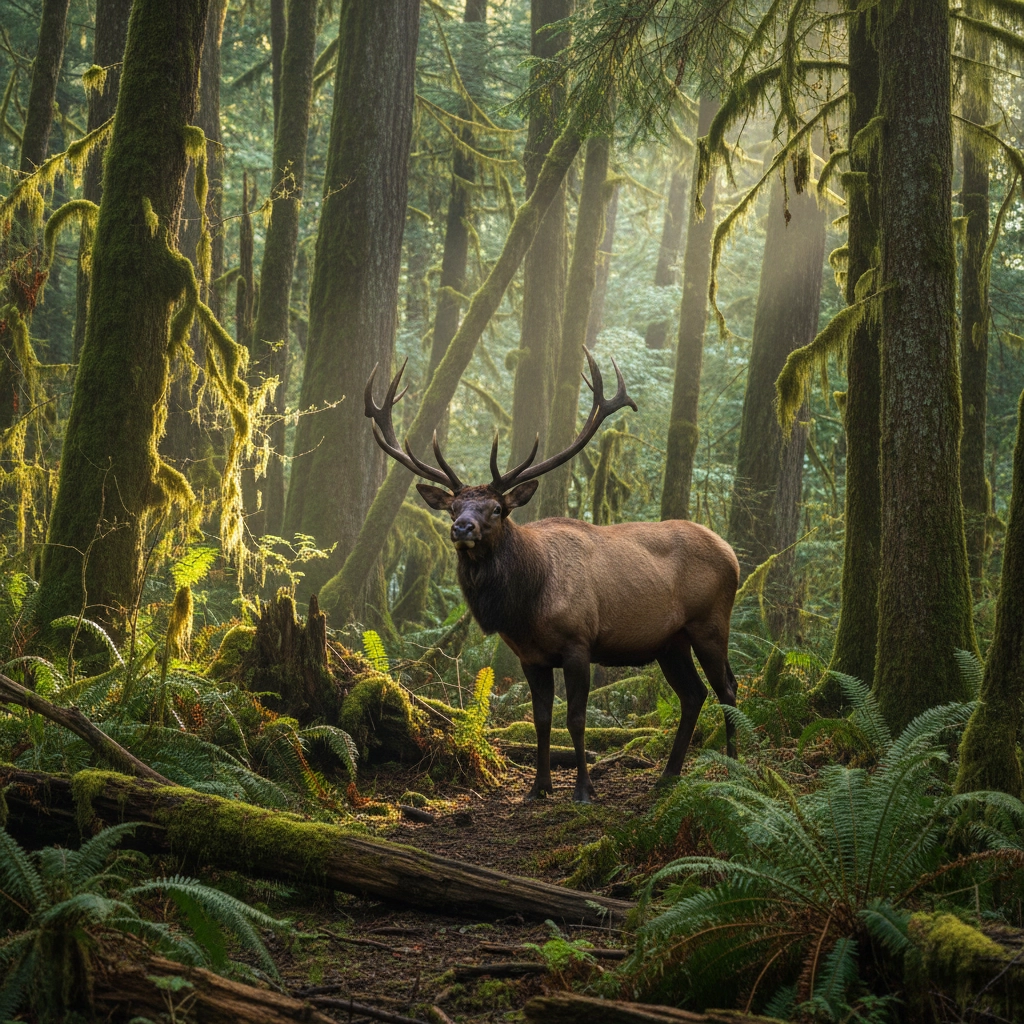Rainforest Ecology in Olympic National Forest: A Student's Guide to Northern Wilderness
- Caleb Mullenix
- Oct 21
- 5 min read
Preparing students for meaningful field research in the Pacific Northwest's temperate rainforests requires understanding the complex ecological systems that define Olympic National Forest and its surrounding wilderness areas. These ancient ecosystems offer unparalleled opportunities for hands-on learning in rainforest ecology, wildlife biology, and conservation science.
Understanding Olympic's Temperate Rainforest Ecosystem
Olympic National Park contains some of North America's last remaining temperate rainforests, receiving between 140 to 167 inches of precipitation annually. This extraordinary rainfall, combined with moderate temperatures that rarely drop below freezing or exceed 80°F, creates ideal conditions for the lush growth that characterizes northern rainforests.
Ensure your students understand the fundamental difference between temperate and tropical rainforests. While both ecosystems feature rich biodiversity and dense vegetation, temperate rainforests occur in cooler coastal zones and support entirely different species assemblages. The western valleys of Olympic: including the Hoh, Queets, and Quinault: exemplify this unique ecosystem type through their distinctive vegetation patterns and ecological processes.

Begin field studies by examining the forest's multi-layered structure. The canopy layer consists primarily of towering Sitka spruce and western hemlock, accompanied by Douglas fir and bigleaf maple. These massive trees create a complex vertical habitat supporting incredible biodiversity from ground level to canopy heights exceeding 200 feet.
Critical Ecological Processes for Student Investigation
Direct student attention to the nurse log system, one of the rainforest's most important ecological features. When large trees fall, they transform into vibrant microhabitats that provide substrate for seed germination, shelter for small mammals, and habitat for countless insects. This continuous cycle demonstrates how death supports new life, creating a living laboratory for studying decomposition, succession, and nutrient cycling.
Emphasize the role of epiphytes: plants that grow on other plants without parasitizing them. Cat-tail moss and licorice ferns create dense carpets on tree trunks and branches, forming aerial ecosystems that support numerous species. These epiphytic communities illustrate adaptive strategies for accessing light and nutrients in dense forest environments.
Encourage students to document the slow decomposition processes characteristic of these forests. The constant moisture and moderate temperatures create conditions where organic matter accumulates over long periods, resulting in thick layers of partially decomposed material that support the forest's incredible productivity.
Wildlife Ecology and Biodiversity Studies
Preparing comprehensive wildlife observation protocols ensures students maximize their learning opportunities during field research. The rainforest supports Roosevelt elk, black bears, and numerous smaller mammals adapted to dense understory conditions. The perpetually moist environment creates ideal habitat for amphibians, making these forests excellent locations for studying species dependent on high humidity levels.

Advise students to pay particular attention to micro-communities within the forest understory. Fungi and insects create complex food webs in the deadfall and decomposing organic matter. These interactions demonstrate ecological principles at multiple scales, from microscopic decomposers to large herbivores, all interconnected through intricate ecological relationships.
Create detailed observation checklists focusing on adaptive behaviors and ecological niches. Students should document how different species utilize various forest layers and microhabitats, noting feeding strategies, shelter preferences, and reproductive behaviors specific to rainforest conditions.
Volcanic Geology and Alpine Forest Connections
Integrate earth science studies by connecting Olympic's rainforests to the broader Pacific Northwest volcanic landscape. While Olympic National Park itself lacks active volcanoes, the region's geological history and proximity to Mount Rainier provide excellent opportunities for comparative ecosystem studies.
Mount Rainier's alpine forests and volcanic soils create dramatically different growing conditions compared to Olympic's coastal rainforests. Encourage students to examine how elevation, precipitation patterns, and soil composition influence forest composition and ecological processes. These comparisons illuminate how geological factors shape biological communities across relatively small geographic areas.
Discuss the role of volcanic ash deposits in soil formation and nutrient availability. Mount Rainier's periodic eruptions have influenced soil chemistry throughout the region, affecting plant growth and forest succession patterns. This connection helps students understand how geological processes influence biological systems over extended time periods.
Conservation Fieldwork and Service Learning Opportunities
Incorporate meaningful conservation work through partnerships with organizations like Farmers Frog and other regional conservation groups. These collaborations provide students with hands-on experience in habitat restoration, species monitoring, and environmental education while contributing to legitimate conservation efforts.

Establish clear learning objectives for conservation fieldwork. Students should understand how their activities support broader ecosystem health, whether through invasive species removal, native plant restoration, or wildlife habitat improvement. This work demonstrates practical applications of ecological principles while fostering environmental stewardship.
Ensure students document their conservation activities through detailed field notes and photographic records. This documentation serves multiple purposes: reinforcing observational skills, creating lasting records of their contributions, and providing material for reflection on the connections between scientific understanding and environmental action.
Practical Field Study Methodologies
Begin preparation by establishing comprehensive safety protocols and emergency procedures. The rainforest environment presents unique challenges including slippery conditions, limited visibility, and potential wildlife encounters. Share detailed safety guidelines with students, parents, and chaperones well before departure.
Create structured observation protocols that maximize learning while ensuring thorough documentation. Students should maintain detailed field notebooks recording weather conditions, species observations, ecological interactions, and personal reflections. Standardized data collection forms help ensure consistency and facilitate later analysis.
Emphasize the importance of Leave No Trace principles in these sensitive ecosystems. Students must understand their responsibility to minimize environmental impact while conducting research. This includes staying on designated trails, avoiding disturbance to wildlife, and properly disposing of all waste materials.
Seasonal Considerations and Optimal Timing
Plan expeditions during spring and fall months when moss growth peaks and visitor numbers remain manageable. These seasons offer optimal conditions for observing ecological processes while providing more intimate experiences with the forest ecosystem.
Prepare students for year-round dampness regardless of season. Waterproof gear remains essential even during summer months, as these forests maintain high humidity levels throughout the year. The constant moisture creates a unique sensory environment that differs significantly from other forest types.

Discuss how seasonal variations affect wildlife behavior, plant growth patterns, and ecological processes. While temperate rainforests lack the dramatic seasonal changes seen in other ecosystems, subtle variations in precipitation, temperature, and daylight influence species activity and ecological dynamics.
Connecting Classroom Learning to Field Experience
Establish clear connections between pre-trip classroom preparation and field observations. Students should understand relevant ecological concepts, species identification basics, and research methodologies before arriving at study sites. This preparation maximizes field time effectiveness and enhances student comprehension.
Create structured reflection activities that help students process their experiences and connect observations to broader ecological principles. Regular discussion sessions during expeditions reinforce learning while addressing questions and clarifying misunderstandings as they arise.
Encourage students to develop research questions based on their observations, fostering scientific thinking and inquiry-based learning. These questions can guide extended investigations and provide frameworks for post-trip research projects or presentations.
The Olympic Peninsula's temperate rainforests offer unparalleled opportunities for student learning in ecology, conservation, and environmental science. Through careful preparation, structured observation protocols, and meaningful conservation work, students gain deep understanding of these critical ecosystems while developing lasting appreciation for environmental stewardship. Ensuring comprehensive preparation and maintaining focus on safety, scientific rigor, and environmental responsibility maximizes the educational value of these extraordinary wilderness experiences.



Comments